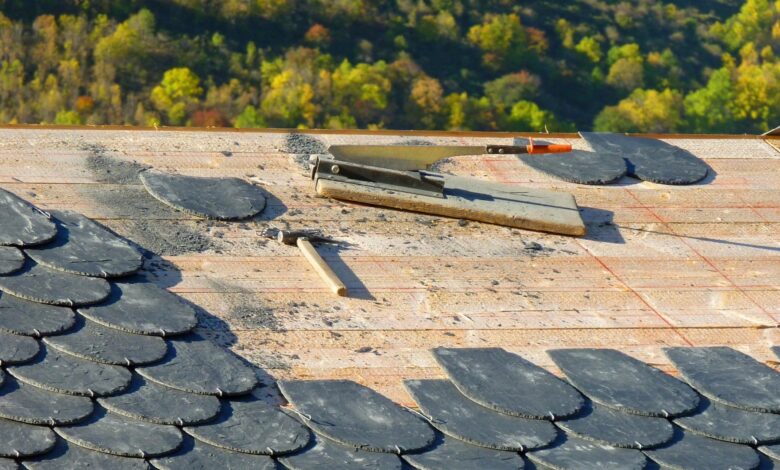How to Find a Leak in a Roof: The Complete Guide

Your roof is a big investment. That’s why it’s essential to keep it in working order.
A leaking roof can lead to all sorts of problems if it’s neglected for long enough. It can result in more money down the drain when it comes to repairs and replacements.
It can also pose a safety concern. A leaky roof adds to the dank conditions of a home. It adds to the prevalence of mold, which can be hazardous to health.
Don’t let a leaky roof get the better of you. Read this article on how to find a leak in a roof.
Inspect the Attic and Ceiling
Begin by checking for any wet or damp spots on the ceiling, as they are a telltale sign of a leak. Look for any water stains or discoloration, and use a flashlight to check for any signs of water coming through the roof problems. Next, carefully examine the attic for any mold, mildew, or wet insulation as these are all potential signs of a leak. Be sure to also check for any holes, cracks, or gaps in the roof decking and around any vents or chimneys.
Check Roof Penetrations
These include chimneys, vents, and pipes that may extend through the leaky roof. Start by checking for any visible cracks or gaps in the seals around these penetrations.
Use a flashlight to look for any signs of water or moisture in the surrounding areas. Check for any loose or corroded flashing that may be allowing water to seep in. It is also recommended to inspect the attic for any signs of water damage near these penetrations.
Examine Shingles and Roofing Material
This involves getting on your roof and visually inspecting each individual shingle for any signs of damage or wear. Look for missing or broken shingles, as well as any cracks or holes that could potentially let water seep through.
It’s also important to check the overall condition of your roofing material, such as asphalt or metal, to see if there are any areas that could be compromised.
Check for Flashing Issues
Flashing is the material used to stuff any joints or transitions on your roof, such as where the roof meets a wall. If the flashing becomes damaged, loose, or dislodged, it can lead to water seeping through and causing a leak.
To check for flashing issues, start by inspecting the flashing around any roof penetrations. Look for signs of rust, corrosion, or damage. Next, check the flashing around any skylights or vents.
Test with Water Hose
One method to test for a leak is by using a water hose. Start by identifying the suspected area of the leak from inside the house. Then, go onto the roof and spray water on that specific area using a hose.
Observe any water seeping through and mark the spot. Move along the roof and repeat the process until all areas have been checked. This method allows for a targeted and controlled approach to identifying the leak.
Investigating Valleys and Ridges
When it comes to finding a leak in a roof, one of the most crucial areas to investigate are valleys and ridges. These are the areas where two different slopes of a roof meet, creating a potential weak point for water to seep through. To properly investigate these areas, start by checking for any visible signs of damaged shingles or deteriorating sealant.
If no visible damage is present, run water down the length of the valley or ridge and observe where it flows. This will help pinpoint the exact location of the leak. It is also important to regularly maintain and inspect these areas to prevent future leaks.
Assessing Gutters and Downspouts
Gutters collect rainwater from the roof and direct it to the downspouts, which carry the water away from the foundation of the house. It is essential to regularly inspect gutters and downspouts.
A thorough assessment should include checking for any cracks, rust, or sagging in the gutters, as well as ensuring that downspouts are securely attached and free from debris. Regular maintenance and prompt repairs can help ensure that gutters and downspouts function properly and protect the home from potential water damage.
Checking for Ventilation Issues
It is essential to regularly look for ventilation issues to ensure a healthy and comfortable environment for occupants. A lack of ventilation can lead to a buildup of pollutants and humidity, resulting in poor air quality and potential health risks.
To check for ventilation issues, one must inspect all ventilation systems, including exhaust fans and air vents, for any blockages or malfunctions. Adequate ventilation not only promotes better air quality but also helps regulate temperature and prevent the growth of mold and mildew.
Identifying Interior Water Stains
Identifying interior water stains is an important and necessary step in maintaining the integrity of a home. These stains can appear as discoloration or dark spots on walls, ceilings, or floors. They may also have a musty odor.
By carefully examining the location, size, and shape of the stain, as well as any surrounding areas, it is possible to determine the source of the water and address the issue before it becomes a larger problem. Early detection and prompt action can save homeowners time, money, and potential damage to their property.
When to Consult a Professional Roofer
It is one of the most crucial aspects of our homes that protect us from external elements. There are times when minor repairs can be done on your own, but there are also instances when it is best to consult a professional roofer.
If your roof is showing signs of leaks, cracks, or missing shingles, it is important to seek the help of a professional roofer. Taking immediate action and consulting professional roof repair and maintenance services can save you from costly repairs and ensure the safety and integrity of your roof.
Ensuring Longevity: How to Find a Leak in a Roof
Knowing how to find a leak in a roof is essential for maintaining the integrity of your home. Don’t wait until it’s too late, take action and protect your home with these simple steps. Start inspecting your roof today and ensure the safety of your property.
Remember to regularly inspect your roof and to call a professional if needed. Now go out and confidently tackle that leak!
For more informative ideas, make sure to check out the rest of our blogs.
You Might Also Like:



